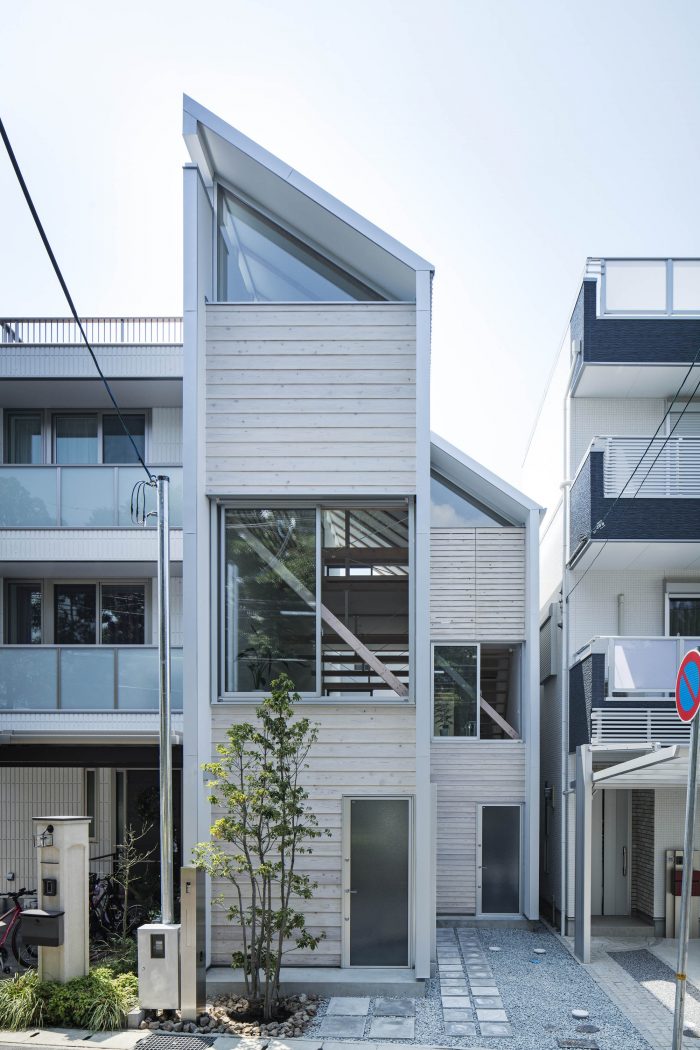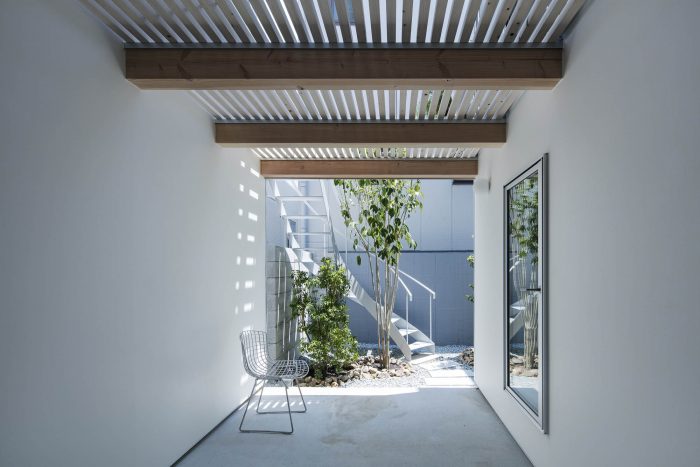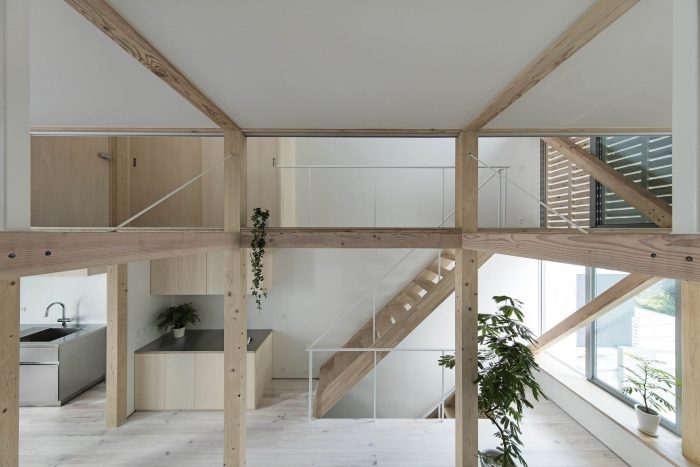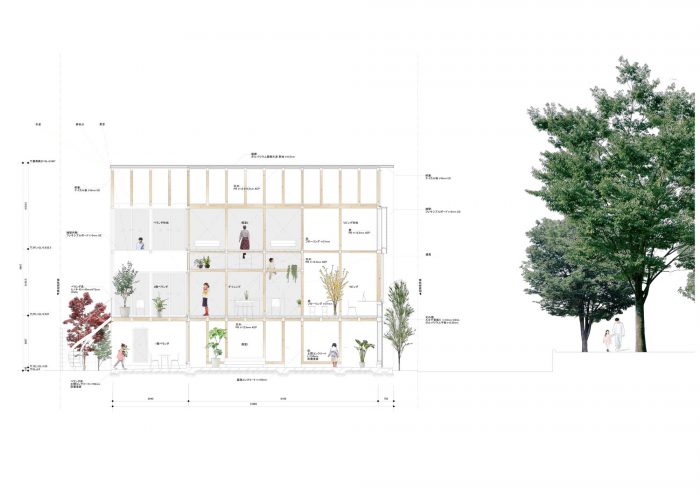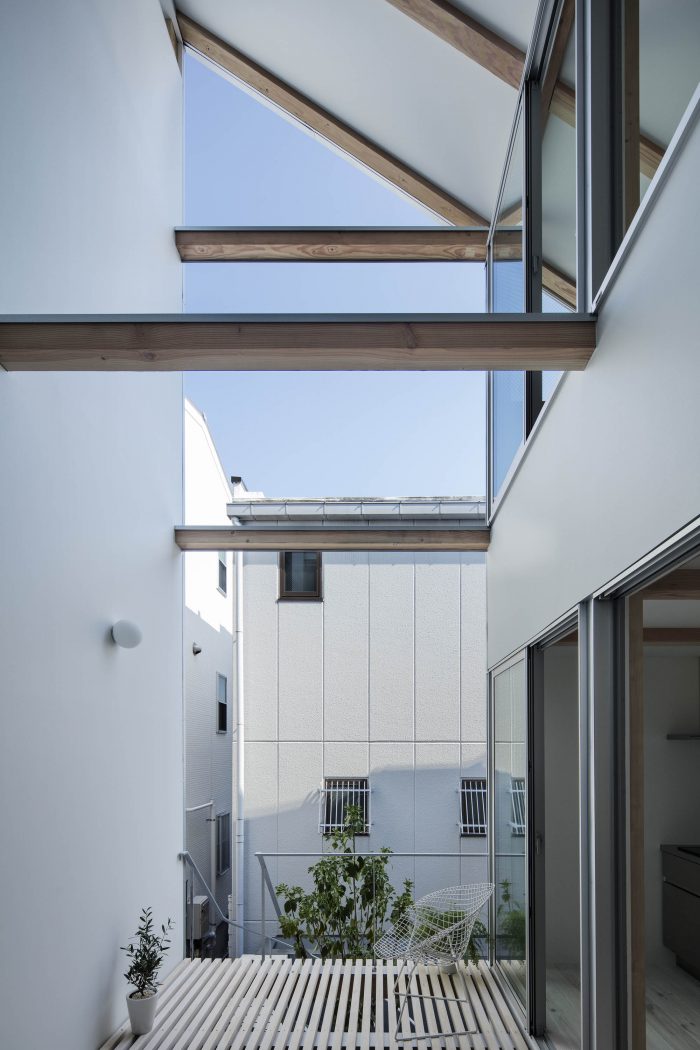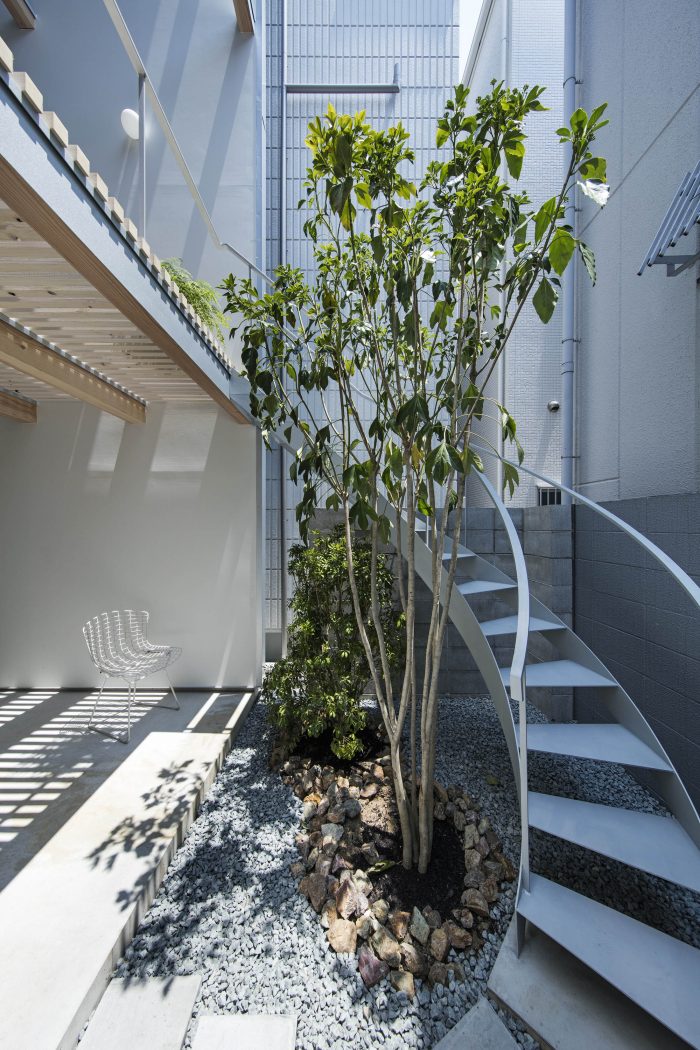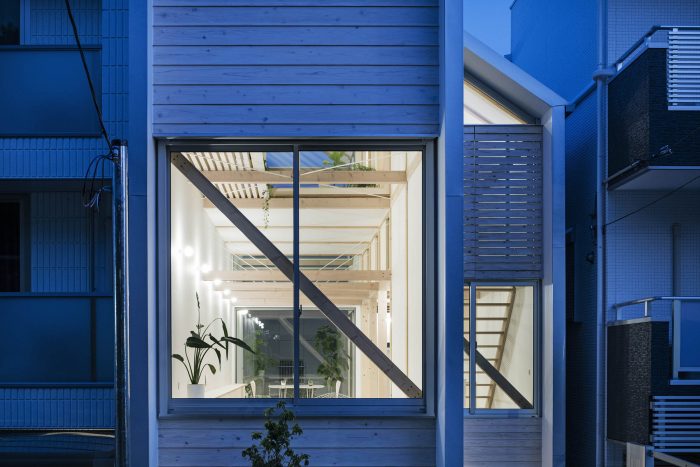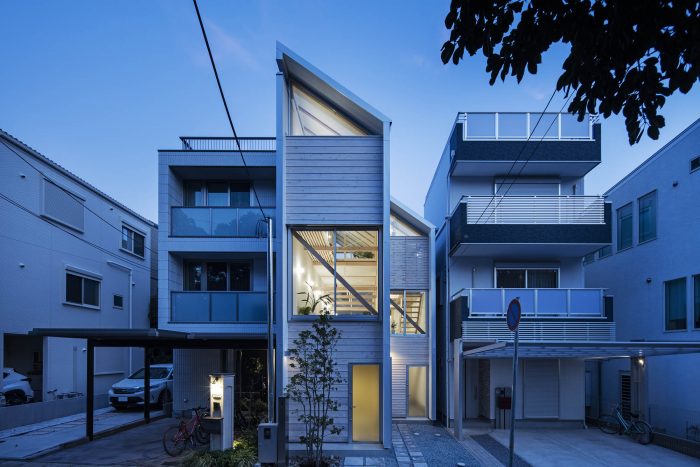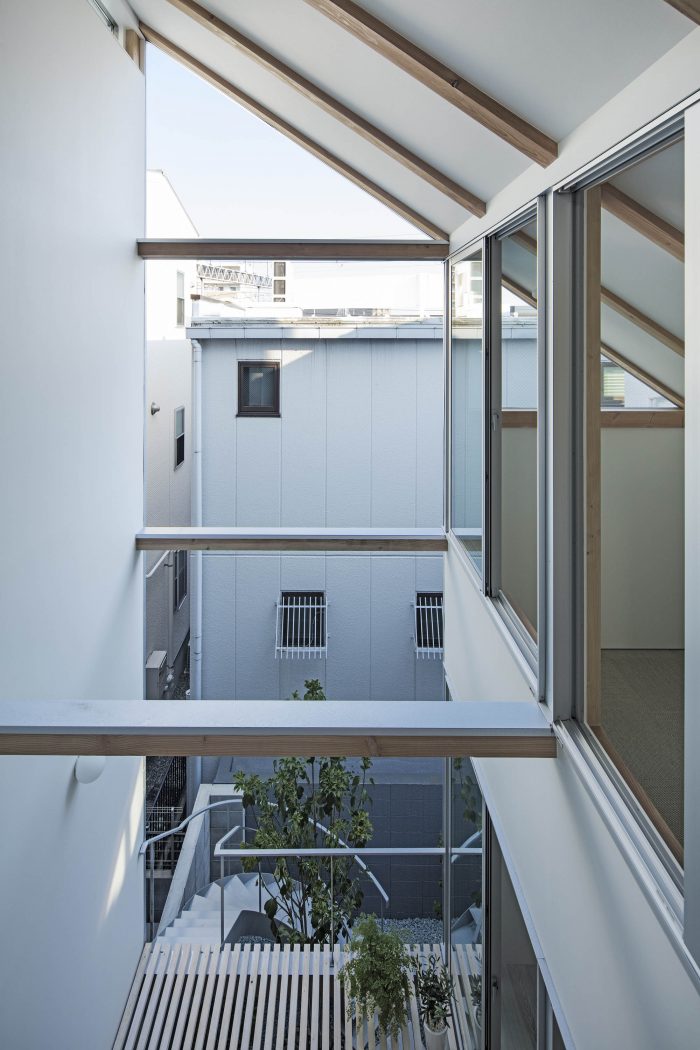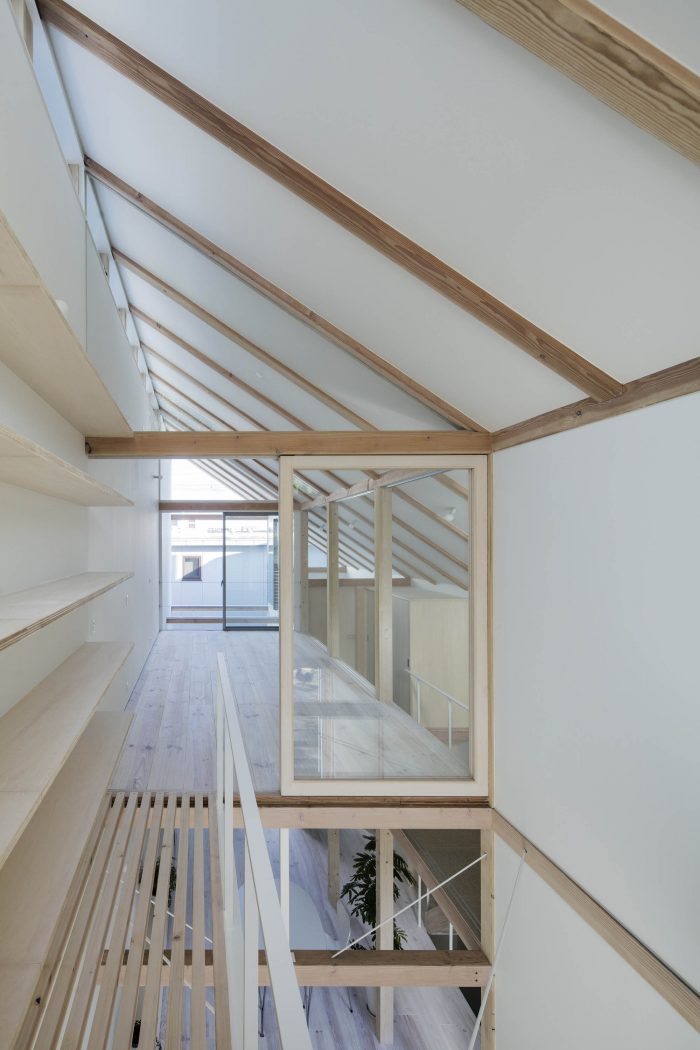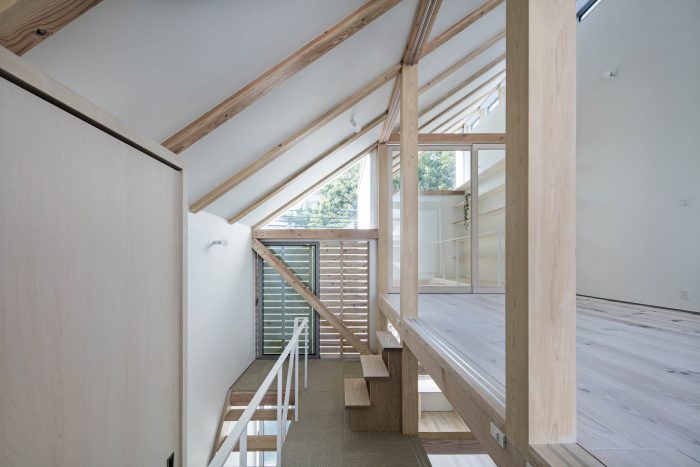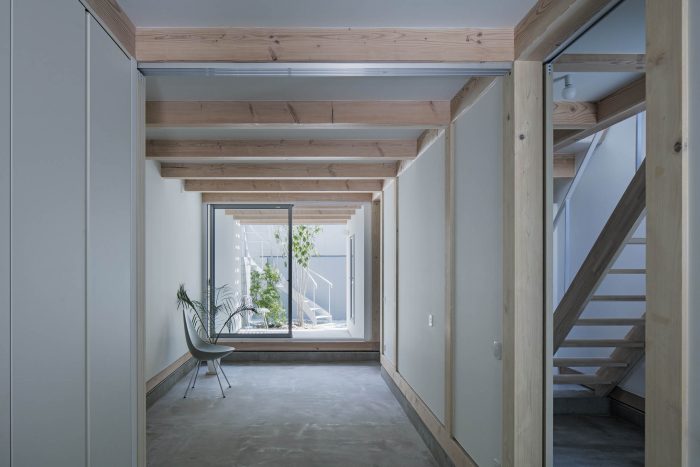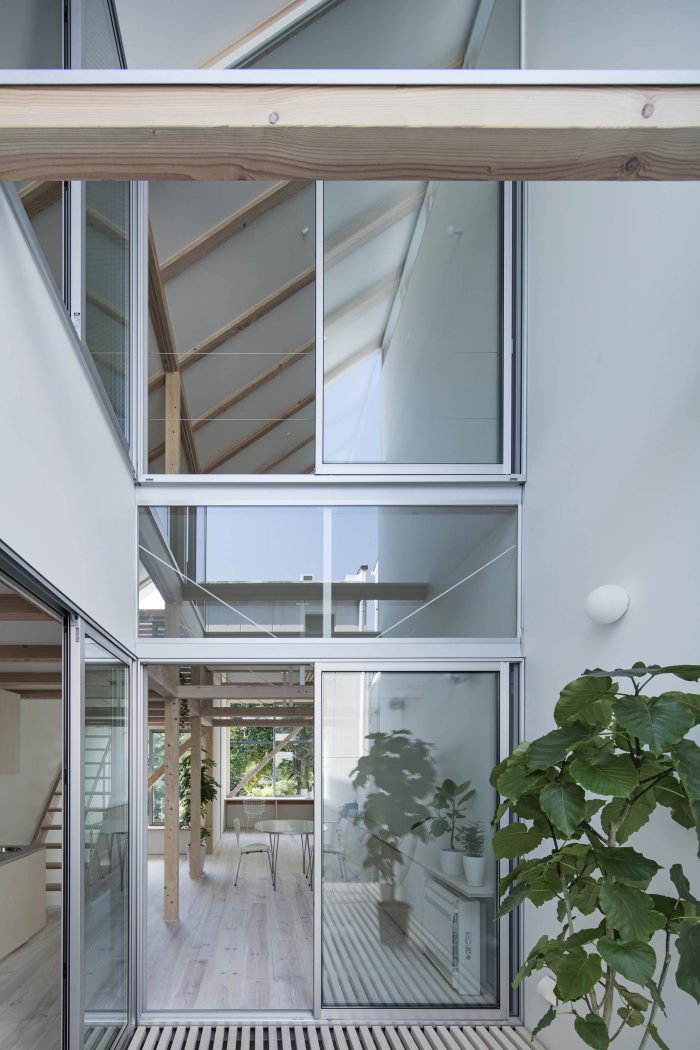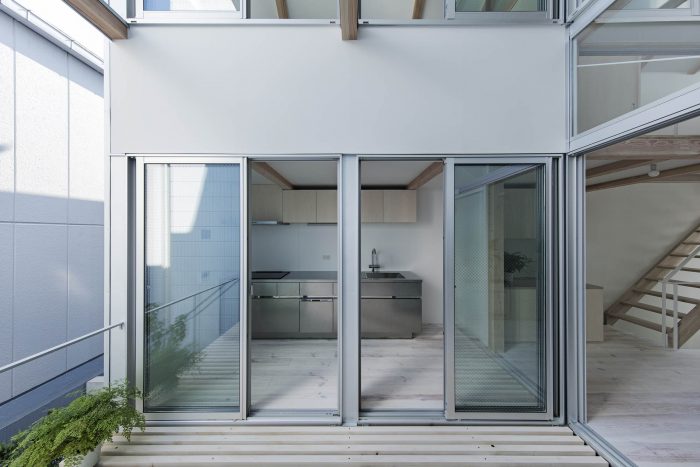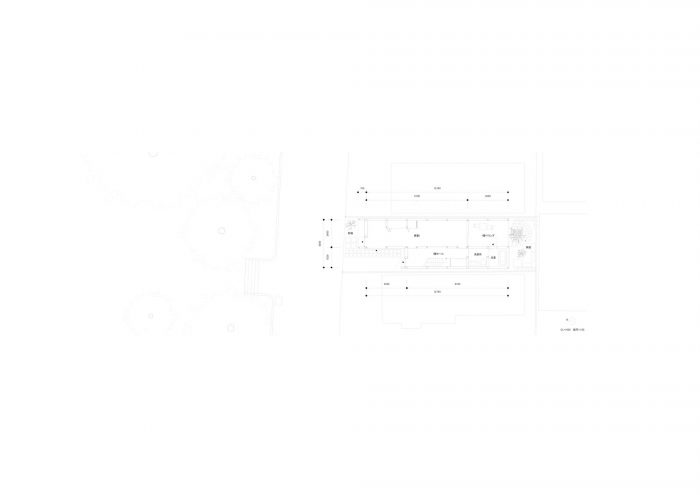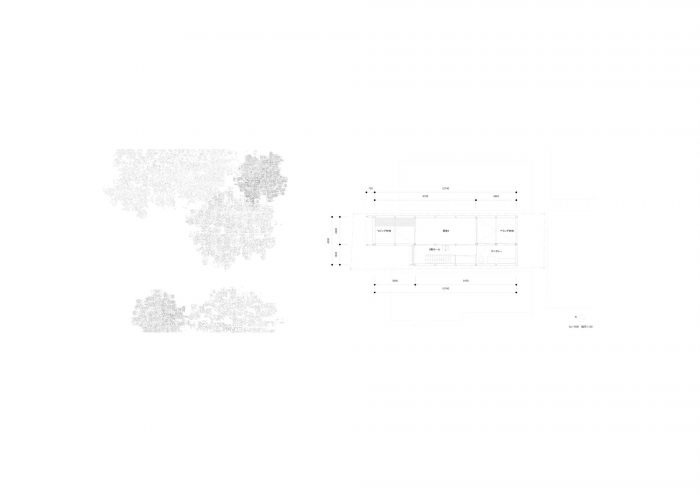通过缝隙和开口将绿色植物带入房屋。
房子面对的是社区居民经常光顾的公园,它是通往有1170年历史的柚木叶神社的入口。大片的绿树在公园的边缘一字排开,花朵美丽地绽放,标志着四季的变化。我们在设计这个房子时设想了一种 “与公园共存的生活”。
Bringing the Greenery into the House through the Gaps and Openings.
The house faces a park frequented by residents of the community and serving as an entry point to an approach to Yuzuruha Shrine with a 1170-year history. Large green trees are lined up on the edge of the park and flowers blooming beautifully mark changes of four seasons. We envisioned a “life with the park” in designing this house.
狭长的场地,宽5米,长17米,位于公园对面的南侧。我们专注于如何将公园的景色一直带到狭长场地的尽头。在平面设计上,狭长的空间在纵向上被刻意分割,厨房、卫生间和楼梯集中在西侧,而连接公园和后院的三层开放式隧道式空间则堆积在东侧。
The narrow and long site, 5m wide and 17m long, is located across the street from the park on the south side. We focused on how to bring in the view of the park all the way to the end of the narrow and long site. In terms of plan, the narrow and long space is deliberately divided in the longitudinal direction and kitchen, bathroom and stairs are concentrated on the west side, while three layers of open tunnel-like spaces connecting the park and the backyard are stacked the east side.
体积在南北方向上被分割和交错,边缘空间成为一个背离公园的入口和一个由L形墙围成的阳台。面向浴室、厨房、盥洗室和后院的阳台作为私人场所,同时带来自然光和风。
The volume is divided and staggered in the north-south direction, and the marginal spacesbecomes an entrance set back from the park and a balcony enclosed by the L-shaped wall. Verandas facing the bathroom, kitchen, washroom, and backyard serve as private places, while bringing in natural light and winds at the same time.
在截面方面,空间的组成方式是,人们不仅可以看到室内的景色,还可以通过公园一侧的客厅的空隙、面向后院的阳台的空隙,以及通过第三层楼板后移产生的空隙,看到外面的公园和后院。
In terms of section, spaces are composed in such a way that one can have views not only of the interior but also towards the park outside and the backyard through the void space in the living room on the park side, the void space in the veranda facing the backyard, and through the gap created by setting back the third floor slab.
在结构方面,我们选择了传统的木柱和木梁结构,传达出一种轻盈的感觉,并与公园里一排排的树干产生共鸣。我们的想法是,通过在从公园延续出来的隧道式空间中安装一系列的柱子、梁和支架,创造出公园中一排排树木延续到房子里的印象。此外,楼层被调整,以便人们的视线水平被设置在可以直接看到大树的郁郁葱葱的最美的高度。
In terms of structure, we chose a conventional wood post and beam structure that conveys a sense of lightness and resonates with rows of tree trunks in the park. Our idea was to create an impression that rows of trees in the park continue into the house by installing a series of posts, beams, and braces in the tunnel-like spaces continuing from the park. Moreover, floor levels are adjusted so that one’s eye level is set at the height where lush greenery of large trees can be directly seen in the most beautiful way.
我们的目标是通过无缝连接低层和高层以及内部和外部,创造一个如同生活在公园里的生活空间,将公园环境带入整个空间,并模糊了公园和内部之间的界限。
We aimed to create a living space as if living in the park by seamlessly connecting lower and upper floors as well as inside and outside, bringing the park environment into the entire space, and blurring the boundary between the park and the interior.
Architects: Shuhei Goto Architects
Area: 117 m²
Year: 2018
Photographs: Kenta Hasegawa
Architects:Shuhei Goto Architects, Sho Date, Shuhei Goto
Structural Design:Shunya Takahashi
City:Kobe
Country:Japan



